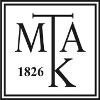Isha, Arora and Seema, Garg and Harshita, Chawla and Sápi, András and Pravin, Popinand Ingole and Suresh, Sagadeven and Azmat, Ali Khan and Sabiha, Fatima and Amrish, Chandra (2025) Visible‑light‑active ‘bismuth tungstate/curcuma longa’ z‑scheme heterostructured photocatalyst for the degradation of methyl orange and phenol. REACTION KINETICS MECHANISMS AND CATALYSIS, 138 (3). pp. 1797-1811. ISSN 1878-5190
|
Text
s11144-025-02796-1.pdf - Published Version Restricted to Repository staff only Download (1MB) | Request a copy |
Abstract
In the present work, bismuth tungstate nanoflowers were fabricated via hydrolysis method using curcuma longa extract (Bi2WO6-G) and without extract (Bi2WO6-C). The analytes were characterized using X-ray diffraction, BET, Transmission electron microscopy (TEM), Field emission scanning electron microscopy (FESEM), UV–vis. DRS Spectroscopy. The as-fabricated nanostructures have been tested for photocatalytic degradation of methyl orange (MO) dye and a recalcitrant pollutant ‘phenol’. The present study showcased the effect of curcuma longa extract, an efficient adsorbent “curcuma longa” which is a rhizome of yellow turmeric on Bismuth tungstate photocatalyst. The improved photocatalytic performance of Bi2WO6/curcuma longa (Bi2WO6-G) heterostructure was mainly ascribed to the unique hierarchical structure, harvesting extended absorption of visible light, higher surface area and inhibiting recombination of photogenerated charges. The current findings may provide new insights to the effect of green extracts for fabrication of nanomaterials for enhanced photocatalytic efficiency.
| Item Type: | Article |
|---|---|
| Subjects: | T Technology / alkalmazott, műszaki tudományok > T2 Technology (General) / műszaki tudományok általában |
| SWORD Depositor: | MTMT SWORD |
| Depositing User: | MTMT SWORD |
| Date Deposited: | 17 Jul 2025 08:28 |
| Last Modified: | 17 Jul 2025 08:28 |
| URI: | https://real.mtak.hu/id/eprint/221210 |
Actions (login required)
 |
Edit Item |



